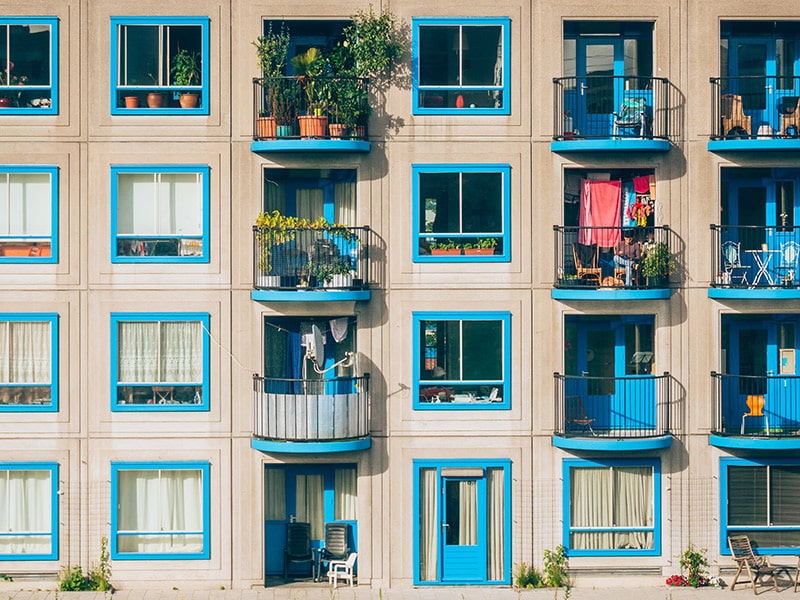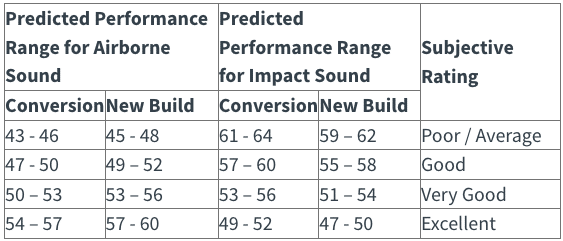We work with contractors to assess the suitability of any proposed on-site works and to provide guidance and support to reduce noise and vibration at the neighbouring receptors.
Sound Insulation in Flats & Houses. How much Sound Insulation is Good Enough?
- September 27, 2018
Sound insulation is the reduction in sound experienced across a partition, such as a dividing wall between offices or rooms in a house or flat.
Suitable sound insulation is incredibly important regardless of the building type for privacy and to ensure that the construction meets all of the relevant Building Regulations.
The sound insulation that is typically used in the construction of offices is of a lightweight structure and offers around 45dB Dw, which means that if the sound level of the source room is around the average level for speech, 65dB, the sound level in the receiver room will be barely audible at just 20dB.

If, however, the level of sound in the originating room increased to 75dB with a loud voice, for example, sound levels in the next room will also rise to a more audible 30dB. As such, sound insulation describes the amount of sound that is lost across a partition between two rooms; not the level of sound that can be heard in the receiving room.
What is privacy?
In terms of sound insulation, privacy describes the amount of sound that you perceive to be lost across a wall. The total privacy experienced is made up of both the sound insulation and any background noise a room may experience. If the level of background noise in the receiver noise were to increase, the level of perceived privacy would also increase.
Therefore, when looking at what levels of sound insulation are required, it is important to take into consideration any regular background noise that the room may be subject to; for example, any service or environmental noise that comes in through windows or vents.
What level of insulation achieves what level of privacy?
Subjectively speaking, differing levels of insulation will provide different levels of privacy. Sound insulation around 30dB Dw will allow most sound through with most sentences being able to be clearly understood. With 40dB Dw, individual words and some phrases can be heard with some effort required. As the rating gets higher, the amount of privacy that the insulation is able to provide increases. At around 70dB Dw, for example, loud music may still be able to be heard faintly.
What do Rw and Dw mean?
Two different parameters are used to measure the sound insulation of a partition. Rw is the lab tested and certified sound reduction index and Dw represents the on-site sound insulation between the rooms. Rw describes the level of sound insulation that the element that makes up the wall or floor was able to achieve under laboratory testing, whereas Dw sound insulation levels are site-specific and are specified by the requirements of clients and Building Regulations. Various factors including background noise, room size and more mean that the lab rated levels of sound reduction will not actually be achieved on site.
On average, there is a difference of around 5-10dB between the lab rated Rw figure and the achieved Dw on site figure of sound insulation. Converting between a Dw and Rw figure for sound insulation is a relatively complex procedure that needs to take into account a variety of extenuating factors including the sound level and reverberation time in the receiver room as well as the area of the partition separating the two adjacent rooms.
To allow the reader to better understand the predicted acoustic performances stated for the proposed partition walls and floors, we have applied the following subjective scale. This scale is based on our opinion of best achieving our client’s expectations.

Recent posts
As urban areas continue to expand and human activities thrive, environmental noise pollution has become a significant concern.
Poor Sound Insulation is an issue that plagues many houses both small and large, through the development of noisy hobbies such as gaming systems, drum kits or food processors, or simply poorly soundproofed properties.










